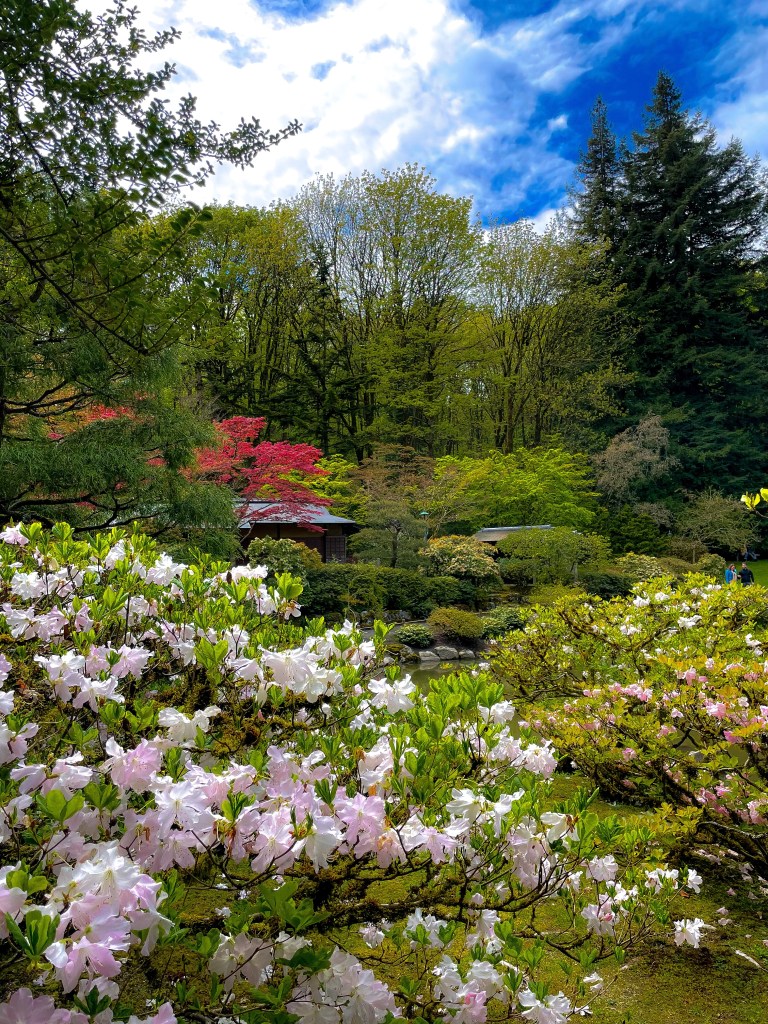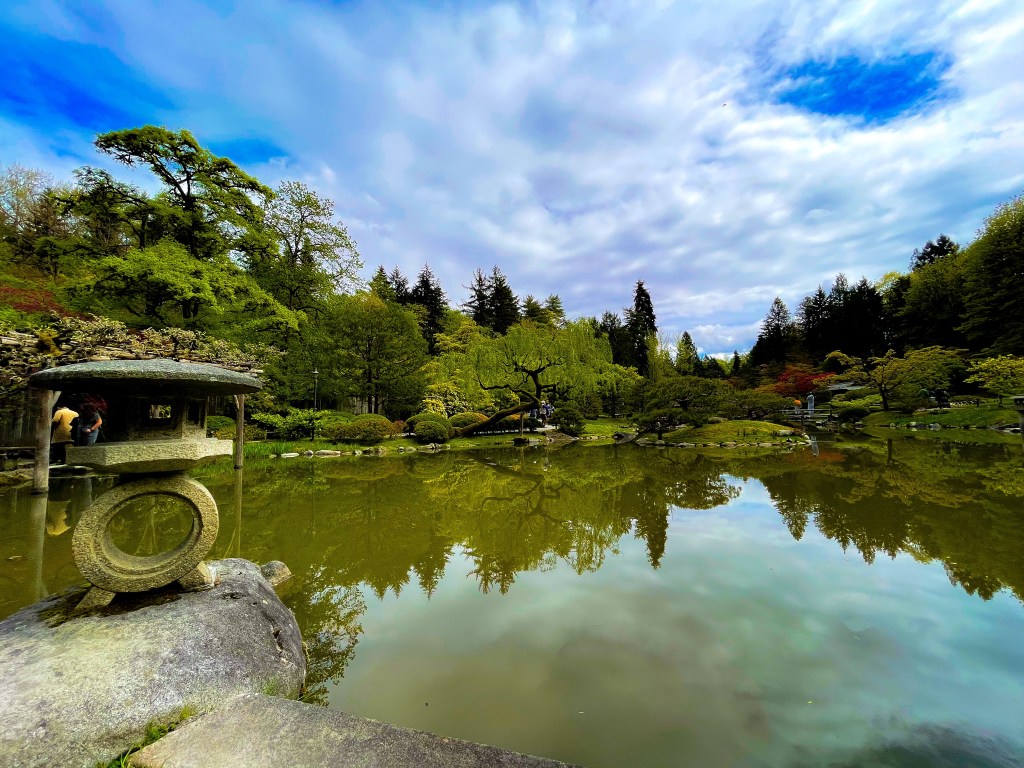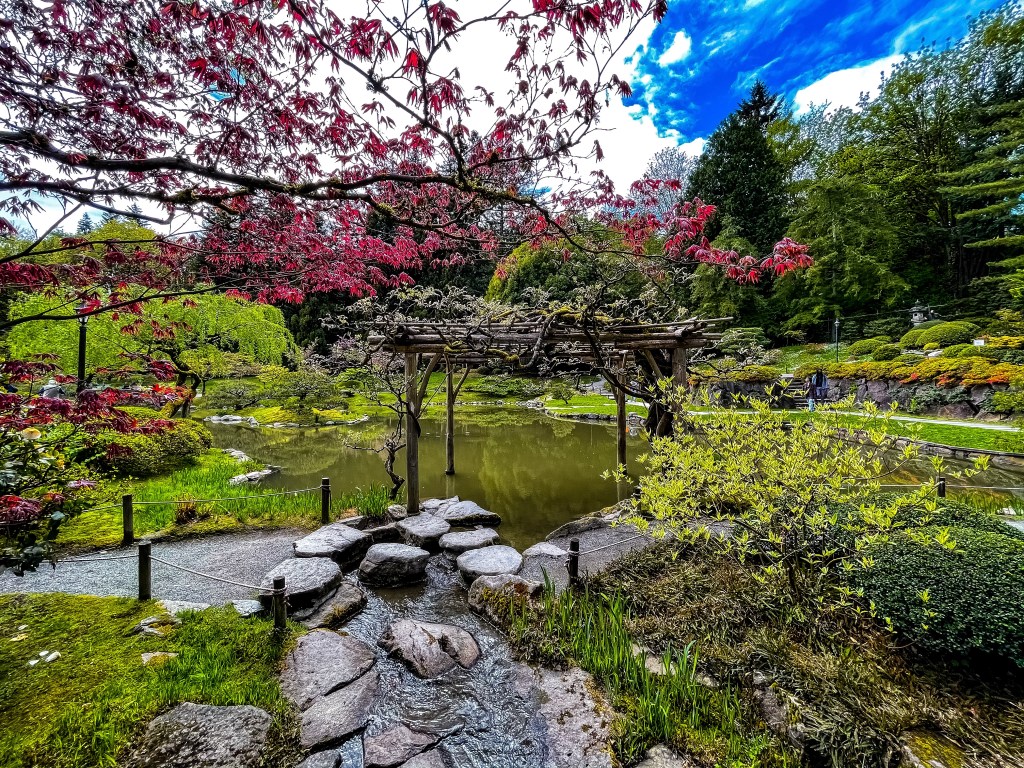“The art of stone in a Japanese garden is that of placement. Its ideal does not deviate from that of nature.”
Isamu Noguchi

If you thought the Washington Park Arboretum was fantastic, meet it’s neighbor and kid sister – the Seattle Japanese Garden. Tucked away in a small corner of the Washington Park Arboretum, the Seattle Japanese Garden is host to some of most marvelously manicured walks, featuring beautifully landscaped arbors and a reflecting pond in the middle. According to local lore, the Seattle Japanese Garden is one of the finest Japanese-style gardens outside of Japan itself, and after one visit I can handedly see why – the attention to detail is exquisite, and their variety of specimens from the flora and fauna, down to the stone architecture and specific placement is impressively thought out, expertly designed.
Though the Seattle Japanese Garden isn’t the only Japanese Garden in the area, it’s easily the most gorgeous detailed and well thought out. Taking up a little over three acres, the Seattle Japanese Garden was first envisioned back in 1909; but, it wasn’t until the end of the 1950s, after World War II, that the garden started to really take shape – and became the first Japanese Garden in post-war construction on the West Coast of the United States.

Before we dive into the Seattle Japanese Garden, let’s take a little dive into the detailed qualities of a Japanese Garden! An ode to Shinto, Daoism and Amida Buddhist philosophies, Japanese Gardens (日本庭園, nihon teien) encourage visitors to reach a state of Zen and meditation through naturally created, or nature inspired, pieces within a minimalist aesthetic with weathered elements that evoke the ephemerality of life. The origins of the nihon teien date back to the Asuka period of Japanese history in the 6th and 7th century; the Japanese observed and digested many of practices at the epicenter of Chinese gardening at the time. Initially, Japanese Gardens popped up on the Honshu island of Japan, the main island, and immediately took natural elements of the landscape into the gestation of their gardens – the seasonality of the area, which had a distinct feel for each of the four seasons, in addition to waterfalls and streams, reflective lakes adorned with beaches of small stone set against slender valleys and the jagged tops of volcanos.

There are two major schools of Japanese Gardens – there are hilled gardens, tsuki-yama, or level gardens, hira-niwa; where the tsuki-yama gardens feature ponds in addition to their hills, the hira-niwa are more akin to moors, or valleys. As a traditional rule, tsuki-yama contains a stream, as well as a real pond of water; however, a tertiary variety of garden, the dried-up landscape or kare-sansui garden, is built to imply a former waterfall while dried ponds, or sand, replace the reflective pond to imply the barren nature of the terrain. Fun fact, the Japanese word niwa has evokes a purified location that is anticipating the arrival of the Shinto spirits, otherwise known as kami.

Other variations on the traditional hilled Japanese Gardens include rin-sen (forest and water gardens), sen-tai (water gardens); amongst the hira-niwa, you’ll discover the bunjin – the Literati, or “literary scholar” garden which is succinct, simple and typically is full of delicately manicured bonsai trees. Last but certainly not least we have the tea gardens; referred to as roji, these have a specific style that’s up to par with the requirements for an official tea ceremony. Some common elements among the nihon teien include guardian stones, springs and streams which flow from a waterfall, lakes, hills, islands, a variety of bridges.
Now, back to the Seattle Japanese Garden! In 1957, as the Arboretum Foundation began raising money for the project, the foundation reached out to Tatsuo Moriwaki from Tokyo Metro Parks to assist with their project – and he tapped in esteemed designers Kiyoshi Inoshita and Juki Iida to bring the vision to life. The garden began construction in 1959 under the guidance of Iida and Nobumasa Kitamura, finishing the next year in 1960. To fill the space, Iida and Kitamura ventured deep into the Cascade Mountains to Snoqualmie Pass, hand selecting 580 granite stones to be used in the Seattle Japanese Garden. To finish the construction, Iida, Moriwaki and Inoshita had the assistance of other Japanese American gardeners – on plants was William Yorozu, for stone setting they brought in Richard Yamasaki and finally for the garden structures themselves they solicited the help of Kei Ishimitsu. The Seattle Japanese Garden features details from the 16th century Momoyama Period, in a more formal or, shin, setting, as well as odes to the 17th century Edo period.

Even before gracing the grounds, you first have to pass through a detailed and lovely bronze gate from Seattle based sculptor Gerard Tsutakawa. Once inside, traditional features of a Japanese Garden present themselves in beautiful succession. First, you’re greeted by an open woodland and mixed forest that delights in Japanese Maples and a mix of Evergreens, with hints of pins, camellias and bamboo scattered around. Winding around the reflecting pond, there are a variety of different bridges to cross; first, a bridge created of earth (known as a dobashi) and then a bridge of planks (tatsuhashi).

Reaching the Northern peak which represents a mountains foothills, you’ll find a large stone wall that gives way to a sweeping view of the park. Coming back into the main grounds, on the Western side of the park, you’ll discover an orchard that sits sweetly surrounded by flowering cherry blossoms during the Spring, finally reaching the roji. Unfortunately, the original tea house on site was burnt down by vandals in 1973 – but was beautifully reconstructed in 1981 by Yasunori Sugita. Last, but most certainly not least, you’ll uncover the final treasure of the gardens – a bellowing waterfall, that ebbs and flows into streams, and finally to the central, koi pond.

The Seattle Japanese Garden is open from the beginning of Spring through the end of November, technically March 1 to November 30 when the grounds close for Winter Maintenance. Open Tuesday through Sunday, park hours range from 10am to 7pm in the Summer, to closing at 6pm in April and September, 5pm in October and last but certainly not least until 4pm in November. Currently, the park is observing COVID protocols so be sure to be on your Ps and Qs with masks and social distancing inside the grounds. For parking, you can either park right at the SPG or if you’re on an adventure through the Arboretum, the park is on the South East end and a beautiful deviation from your normally scheduled blooms of the Washington Park grounds.
Curious if you have a unique, Japanese Garden in your neck of the woods? Head here to see your local fare! Do you have a Japanese Garden that you’re head over heals in love with? Show it some love and leave me a link to it in the comments below – I can’t wait to check out the places you can’t get enough of!
For more on the Seattle Japanese Garden, head to their socials – or just take a visit!
Website | UW’s Website | Facebook | Instagram | Twitter
“Life is a series of natural and spontaneous changes. Don’t resist them; that only creates sorrow. Let reality be reality. Let things flow naturally forward in whatever way they like.”
Lao Tzu

You must be logged in to post a comment.